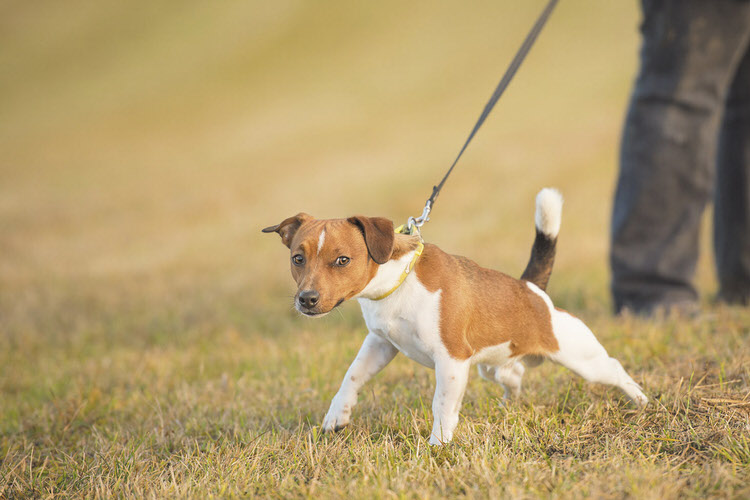
Dog pulls on leash – jack russell terrier
Anne Quinn-Diment
For 20 years, the SaddleBrooke Dog Park has provided a dedicated space for member canines to experience off-leash exercise, playful romps, and joyful camaraderie. Yet, while our park is a valuable resource for pet parents with well-socialized dogs, it is not well-suited for dogs that react unpredictably or negatively when in social situations.
Pet owners of reactive canines often struggle to provide the physical exercise that their healthy dogs need, such as walks. Often misunderstood, reactive pups may exhibit strong responses to certain stimuli, leading to barking, pulling, or anxious behavior during walks. For these dedicated pet parents, figuring out how to provide their pets with the exercise they need requires extra care and consideration.
Here are a few ideas for how to responsibly approach walks as exercise for your reactive pup:
1. Choose the Right Time
Timing is crucial when walking a reactive dog. Opt for quieter periods, avoiding peak hours when roads or paths are bustling with activity. Early mornings or late afternoons can offer a more serene environment, minimizing potential triggers for reactive behavior.
2. Gradual Introductions
Introduce your reactive dog to new surroundings gradually. Begin with short walks in less stimulating environments to allow your furry friend to acclimate to the sights, sounds, and scents without overwhelming them.
3. Utilize Distraction Techniques
Bring along your dog’s favorite toys, treats, or a puzzle feeder to divert their attention from potential stressors. Engaging activities can provide a positive focus during walks, reinforcing positive behavior and creating a more relaxed atmosphere for your dog.
4. Maintain a Safe Distance
Be mindful of your dog’s comfort zone, and maintain a safe distance from other dogs and people. Gradually expose your dog to other canines as they become more comfortable, avoiding crowded settings.
5. Positive Reinforcement
Reward desired behavior with praise and treats during walks. Reinforce calm behavior and appropriate interactions with positive reinforcement, fostering a positive association with outdoor experiences.
6. Leash Management
Always keep your dog on a leash during walks. This provides a sense of security for your reactive dog and ensures a controlled, safe environment for everyone.
7. Seek Professional Guidance
For pet owners facing persistent challenges with a reactive dog, seeking guidance from professional trainers or behaviorists can be immensely beneficial. These experts can provide tailored strategies to address specific behavioral issues and enhance the overall well-being of the dog.
Remember, it’s essential to prioritize the safety of both your dog and others. If your dog’s reactivity is severe or if you’re concerned about their behavior around others, it may be best to instead turn your backyard into a playground, incorporating tennis balls, durable rubber sticks, and fox-on-a-stick-type toys.
